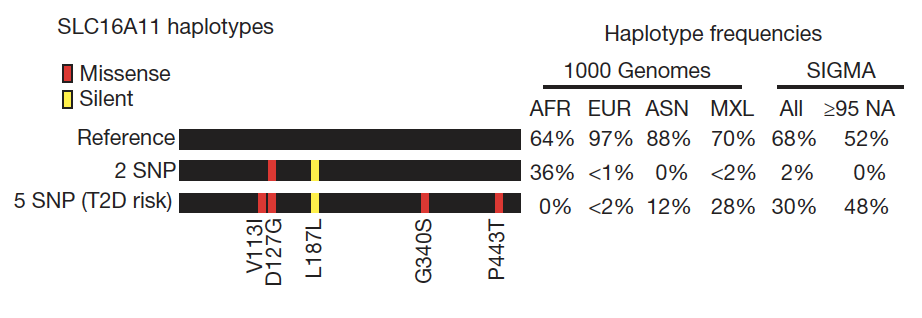
IMPORTANCE: Latino populations have one of the highest prevalences of type 2 diabetes worldwide. OBJECTIVES: To investigate the association between rare protein-coding genetic variants and prevalence of type 2 diabetes in a large Latino population and to explore potential molecular and physiological mechanisms for the observed relationships. DESIGN, SETTING, AND PARTICIPANTS: Whole-exome sequencing was performed …
Read More…

Performing genetic studies in multiple human populations can identify disease risk alleles that are common in one population but rare in others, with the potential to illuminate pathophysiology, health disparities, and the population genetic origins of disease alleles. Here we analysed 9.2 million single nucleotide polymorphisms (SNPs) in each of 8,214 Mexicans and other Latin …
Read More…

OBJECTIVE: Proinsulin is a precursor of mature insulin and C-peptide. Higher circulating proinsulin levels are associated with impaired ?-cell function, raised glucose levels, insulin resistance, and type 2 diabetes (T2D). Studies of the insulin processing pathway could provide new insights about T2D pathophysiology. RESEARCH DESIGN AND METHODS: We have conducted a meta-analysis of genome-wide association …
Read More…

Levels of circulating glucose are tightly regulated. To identify new loci influencing glycemic traits, we performed meta-analyses of 21 genome-wide association studies informative for fasting glucose, fasting insulin and indices of beta-cell function (HOMA-B) and insulin resistance (HOMA-IR) in up to 46,186 nondiabetic participants. Follow-up of 25 loci in up to 76,558 additional subjects identified …
Read More…

The genes for the sulfonylurea receptor (SUR1; encoded by ABCC8) and its associated islet ATP-sensitive potassium channel (Kir6.2; encoded by KCNJ11) are adjacent to one another on human chromosome 11. Multiple studies have reported association of the E23K variant of Kir6.2 with risk of type 2 diabetes. Whether and how E23K itself-or other variant(s) in …
Read More…







